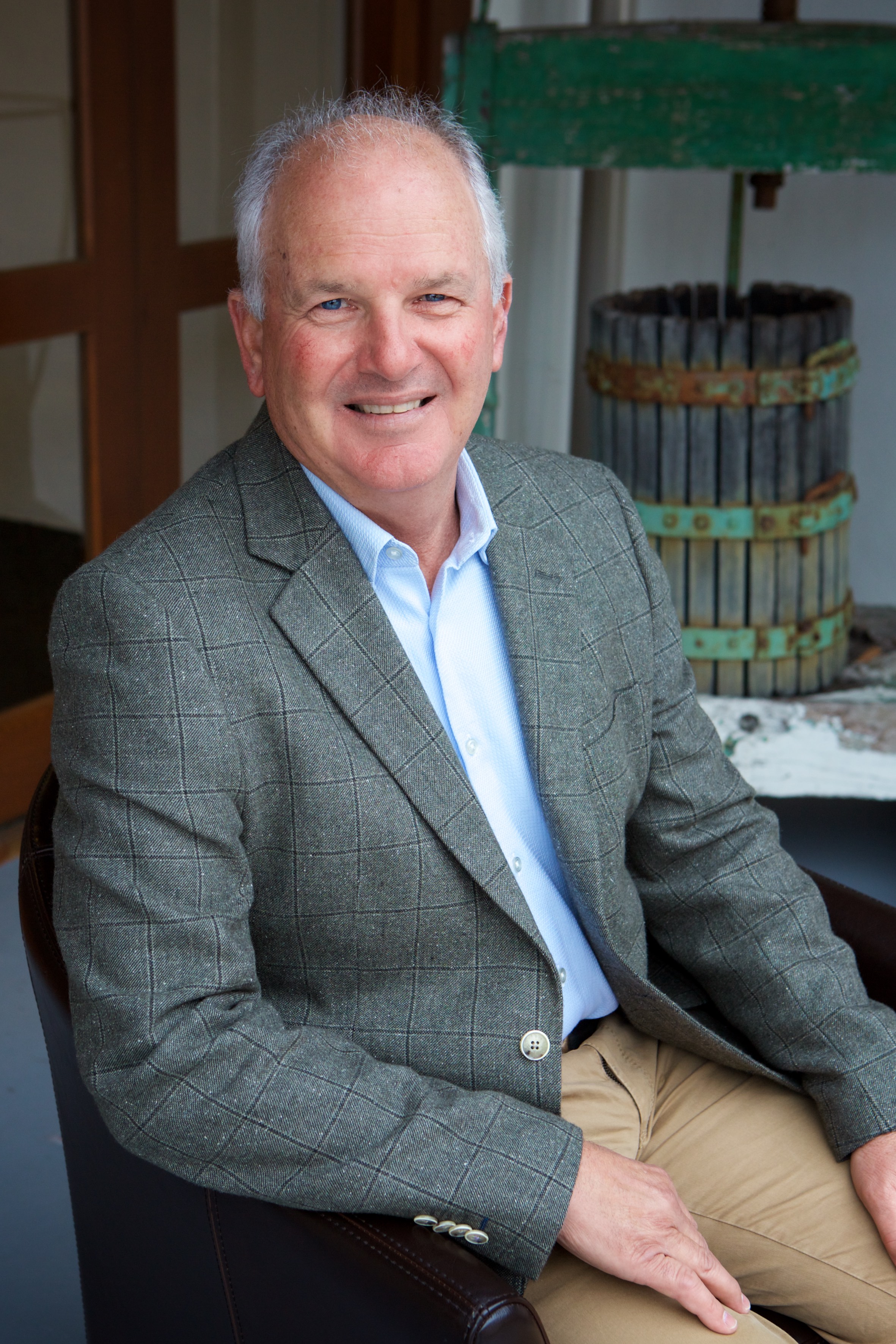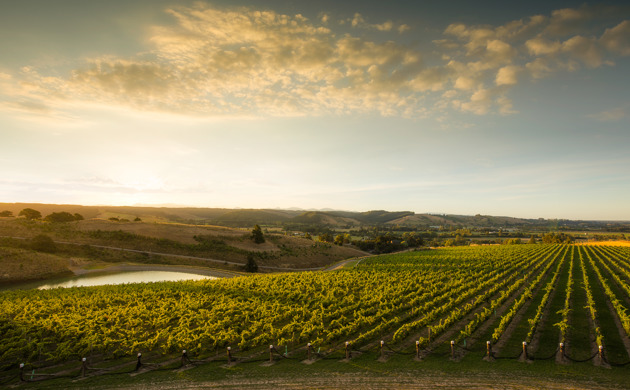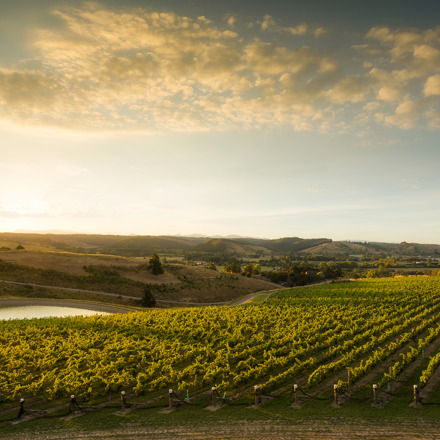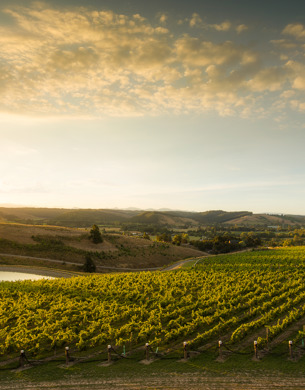Lorraine Carryer

A century later, his great-grandson Dominic Pecchenino moved from that new world to the even newer one of New Zealand wine, where he’s made his mark with a commitment to the science of grape growing. A willingness to share his time and knowledge saw the stalwart awarded the 2021 Wine Marlborough Lifetime Achievement Award, followed swiftly by his naming as a 2022 New Zealand Winegrowers (NZW) Fellow. “You do things for an industry because you want to improve that industry, not for the personal recognition,” he says. “I’ve sought to try and improve wine growing in Marlborough, and a lot of other people out there have been doing that for a long time too.”
“You do things for an industry because you want to improve that industry, not for the personal recognition.”
Dominic grew up in California and originally studied geology at university. The path to viticulture was serendipitous; while working in a wine shop during his junior college years, he happened to meet Julio Gallo who suggested a winemaking career might appeal. This didn’t capture his interest, but the subsequent suggestion of growing grapes for wine did. He gained a Master’s degree in viticulture from California State University, Fresno – one of only three places in the United States offering viticulture at that time.
His career began with a company in mixed production, including 8,900 hectares of grapes, tree crops, wheat, melons and other vegetables. Projects for the new graduate included the innovation of underground drip irrigation. Consulting work followed, including phylloxera mitigation, fertility and irrigation management, as well as evaluating properties for sale or development.
In the 1980s the wine industry in California was shaken by a worldwide wine glut and phylloxera, so Dominic was interested in other opportunities. An acquaintance who had been to New Zealand suggested he send his résumé to John Webber in Blenheim. Matador Estate was an 80ha vineyard, and John was looking for someone to advise on redevelopment of new rootstock.
“As an industry we’ve never sat on our heels; we’ve always looked forward and been at the leading edge of the industry.”
Dominic produced a hand-written report and “John took a gamble on me and invited me to come to New Zealand”. The job was offered as a fly-in consultant or permanent, and Dominic and Marianne decided the move had appeal. Their three young children were a conduit to friendships that have remained strong, and three decades later the couple is still here, although both sons have now returned to the United States to live. “Blenheim’s a great spot, but you need to manage your island fever,” Dominic says. He is enthusiastic about all the activities Marlborough has to offer, including skiing and getting out in the Sounds – although water skiing is off limits since a recent hip replacement.
When asked about the major changes to the industry during the past 30 years, Dominic cites developments in technology, the increase in educational base, and the undertaking and implementation of research. Dominic was the driver for bringing mechanical canopy thinning to Marlborough, initially as a response to concerns that a labour shortage was going to become a critical issue in the industry.
In the research phase prior to a trial, Dominic noted that while mechanical thinning had been done in Australia and the United States, New Zealand weather was more unpredictable, and timing of thinning would be critical to avoid crop damage. Along with Mark Kristic from the Australian Grape and Wine Research and Development Corporation, he ran the first trial in 2008, which was so successful that a subsequent trial from 2009-2011 was completed with the involvement of Plant & Food Research. This extended trial achieved even better outcomes – not only succeeding with the primary goal of yield control, but (because of the removal of organic waste during the process) achieving secondary benefits in the area of botrytis prevention. What was pioneering in the early part of this century is now standard operating practice. Opinion in the industry is that the 2014 vintage – the first heavy crop following the widespread industry adoption of mechanical thinning – could have turned out very differently if manual thinning was the only available option.
Dominic’s vision and leadership was instrumental in the establishment of Bragato Research Institute (BRI), for which he was original Chair. He also served as the Chair of the NZW Research Committee from 2006 till 2020. BRI is technically the best wine research facility in the Southern Hemisphere, because “we had a really great committee and we were able to build upon what already existed around the world”, says Dominic. “As an industry we’ve never sat on our heels; we’ve always looked forward and been at the leading edge of the industry.” The industry has also understood the market, and Dominic cites the New Zealand Lighter Wines initiative (a development programme led by NZW and co-funded through the Ministry for Primary Industries’ Primary Growth Partnership) as an excellent recent example of this.
Collaboration and the sharing of information have been hallmarks of the viticulturist’s career. Along with NZW’s former General Manager Research, Simon Hooker, he introduced Grape Days as a practical way of sharing research results with members. He has written and taught on a variety of vineyard management topics, including frost protection, botrytis in Sauvignon Blanc, the correct way to carry out soil sampling, making compost from vine prunings, and the practice of mulching in the vineyard to add organic matter. He has been a guest speaker on many topics at BRI conferences, and a guest lecturer at Nelson Marlborough Institute of Technology, as well as teaching Lincoln University students on field trips to Marlborough. Hosting Italian exchange students through the Bragato Trust. was a feature of Dominic and Marianne’s life for 11 years.
“It is in our best interest to take care of the land now and in the future..."
Dominic continues to see labour as the greatest ongoing challenge for the industry, with cascading effects. “Labour is always going to be the industry’s Achilles’ heel,” he says. For example, some Marlborough vineyards are becoming susceptible to trunk disease and having to be redeveloped.
Ultimately this stems from a labour issue as “we are having to prune our vines too early”, he says. Mechanisation can only do so much, and while some varietals are suited to spur pruning, he can’t see a time when industry won’t need manual processes.
On climate change and its impact on the industry, Dominic is phlegmatic, noting that farmers have always had to adapt to constantly changing weather, markets and regulations. “Weather events are getting bigger... and this impacts the way we farm and will lead us to change some practices,” he says. He believes industry can adapt.
“It is in our best interest to take care of the land now and in the future... for instance, if we get into a situation where vineyards get hotter and drier, we may have to mitigate fruit exposure, perhaps by changing row direction, or by preserving greater leaf coverage, in order to preserve the unique characteristics of Marlborough Sauvignon Blanc.”
To the question of what he might have chosen if not viticulture, the answer is unhesitatingly aviation, spoken by a pilot who finds little time to fly. “But I was lucky that I found viticulture. It’s a great career option.”
This was first published in New Zealand Winegrower magazine issue 136 and is republished with permission.






